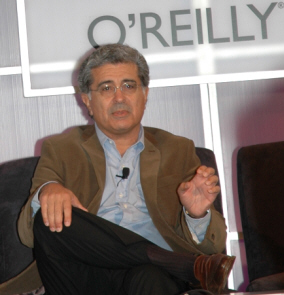Yahoo 2.0: Time spent = more money


The diversified set of services is also what Semel considers Yahoo's differentiation from Google. Search accounts for about 5 percent of the page views and 40 percent of the revenue. Yahoo jumped into search about two years ago, but Semel sees the big opportunity in monetizing the other 95 percent of page views. "The two largest areas of time spent are communications products [Mail, Messenger, Yahoo 360,etc.] and content, each about 40 percent [of page views]. Yahoo is strong in both, and as the content gets better and more engaging, we will find more clever ways in addition to branding advertising to monetize those pages," Semel said.
Google is starting to look more like a portal, but would probably be ranked number 4 behind Yahoo, MSN and AOL. "So far Google is moving to get into some of the major portal activies, but they are not tied together," Semel said. I' m not sure about the rankings, but it's clear that Semel spends a lot of his time thinking about Google and views creating a destination for users as the critical path.
Semel described Yahoo's content strategy has three prongs: user generated content, such as that enabled Yahoo 360, Flickr, Local and tools and themes going forward; licensing and aggregating partner content; helping to design the future of what content will be come and lay the groundwork for what content looks like in the broadband world with everything connected and IPTV.
User-generated content is of "utmost importance," Semel said. He talked about opening up Yahoo so that users can put ads on their photos or send them to a buddy list, for example. For Yahoo the leverage is in knitting together its services, monetizing the content and developing new models for content creation and distribution.
The third category is where Yahoo is drawing attention lately. Semel said he is plowing into original content, such as Kevin Sites in the Hot Zone, because he doesn't want to wait ten years until others (traditional media) figure it out. He's going to give the content development experiment 18 months before he gets really concerned about having a hit show. "This is a marathon, not a sprint," Semel said. "We want to take advantage of the next wave of connectivity, first within ourselves and then with every connected device."
Between Semel and Barry Diller, the former Hollywood moguls are reshaping major chunks of the formerly wild Internet, aggregating content and people, looking for the revenue and acquiring talent. It's not a wholly or holy new business. Whether filling movie theatres, targeting ads or getting people to spend more quality time on Yahoo or IAC properties, it's about delivering content and services worthy of getting a user's time and attention, and trust.
Photo Gallery: Web 2.0 Conference 2005